Australian service personnel baring all: images of nudity from WWI and WWII
By Alice Rawkins, Engagement Officer, Anzac Square Memorial Galleries | 14 October 2024

Two soldiers wading through knee-high water to reach a camp, Lemnos, 32836, 3rd Australian General Hospital photograph album, John Oxley Library, State Library of Queensland, Image number: 32836-0001-0041
Warning: This blog contains images of nudity.
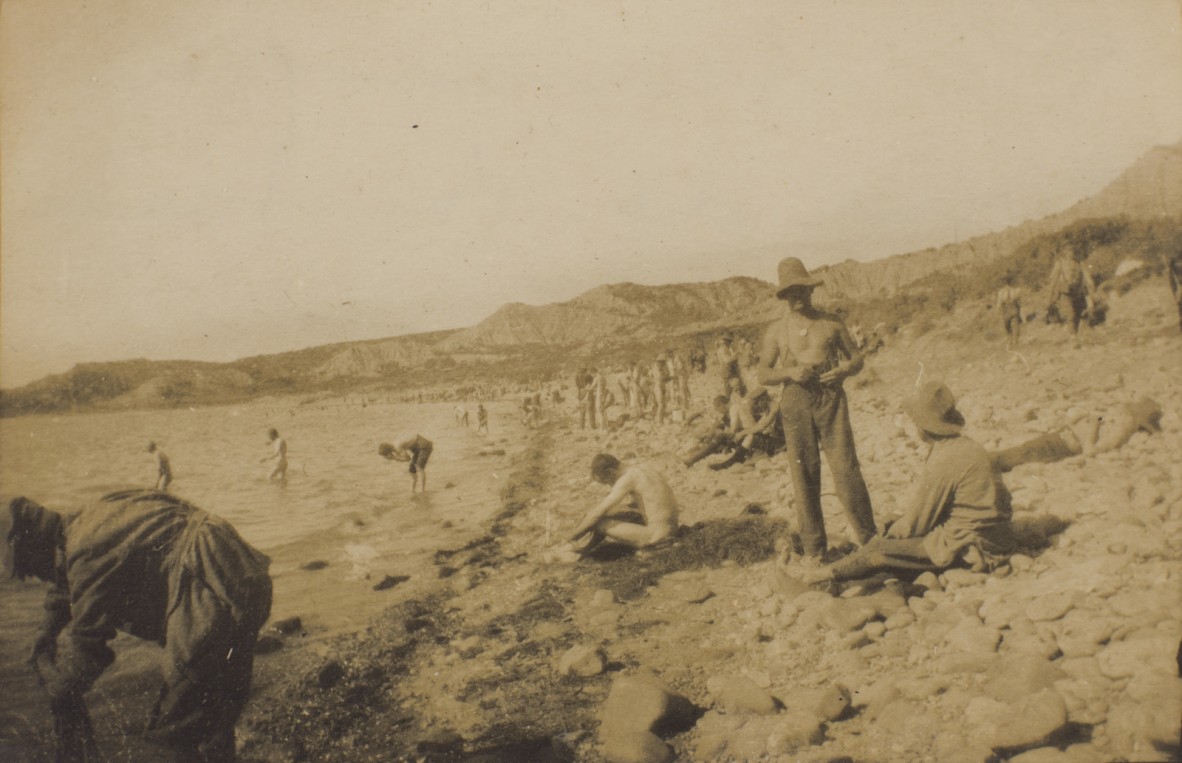
Australian troops swimming at Anzac Cove, Gallipoli, 30674, Constance Mabel Keys collection, John Oxley Library, State Library of Queensland.
16 October 2024 is “Love Your Body Day”, a day to promote acceptance of all bodies, regardless of shape, size, skin tone, gender or physical abilities. To celebrate the diversity and strength of the human body, staff at Anzac Square thought that it was a perfect time to share (or maybe overshare) a selection of nude images from World War I and II. These exposing images come from State Library’s vast military collections and provide an uncovered insight into some of the challenges and experiences of our past service personnel.
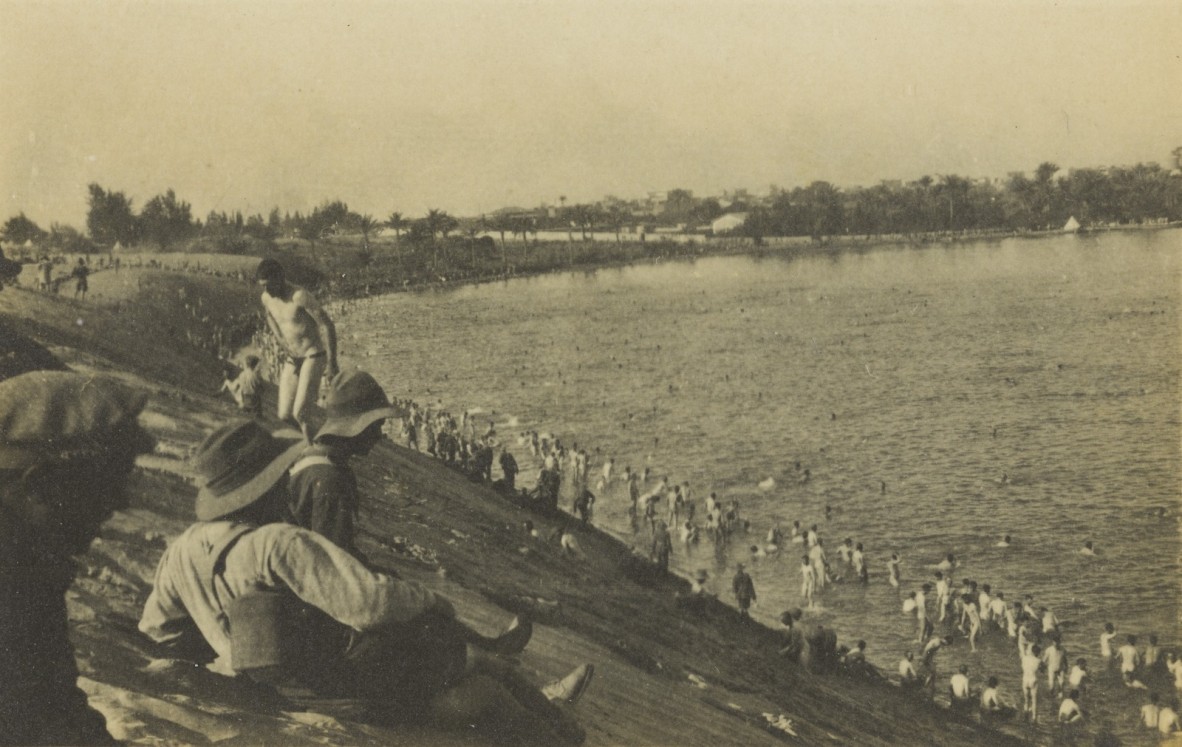
Troops swimming at Ismailia, Egypt, 1915, M 946 Brett and Burley Family Records, John Oxley Library, State Library of Queensland.
During times of war, concerns about modesty and privacy tend to disappear, especially for soldiers. Service personnel often lived in close quarters, with shared accommodation, bathroom facilities and recreational spaces. This left little space for shyness. Sometimes being nude was also a necessity, whether this was for a bathing parade, to pick out lice from your uniform or simply due to the unbearable heat! This all increased your likelihood of being snapped baring all by a fellow soldier with a camera. We are lucky that a lot of these images have made their way into our collections.
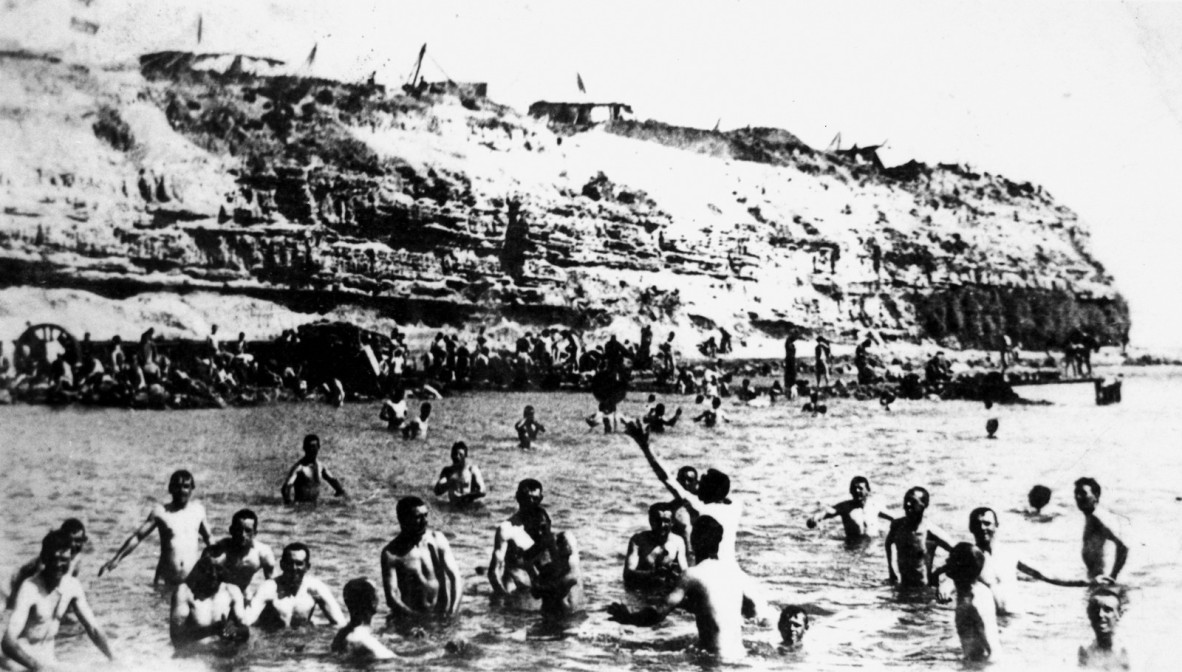
ANZAC soldiers enjoy a swim after returning from the trenches of the Dardanelles, 1915, State Library of Queensland.
Some of the most common nude images you will find in our military collections are of “bathing parades” from World War I. To ensure hygiene among troops, soldiers were taken, when possible, to local pools, beaches, rivers and other sources of water to allow them to bathe and shave. This was also an opportunity to thoroughly soak your uniform, hopefully drowning unwanted bugs, such as lice. The photo above shows a large group of Australian soldiers enjoying a swim at ANZAC Cove. While they appear relaxed, swimming at Gallipoli was a dangerous activity, with soldiers never safe from hostile fire. Turkish artillery regularly shelled the cove, with 8 men hit by a shell on 23 June 1915. One of them came out of the water holding his severed arm.
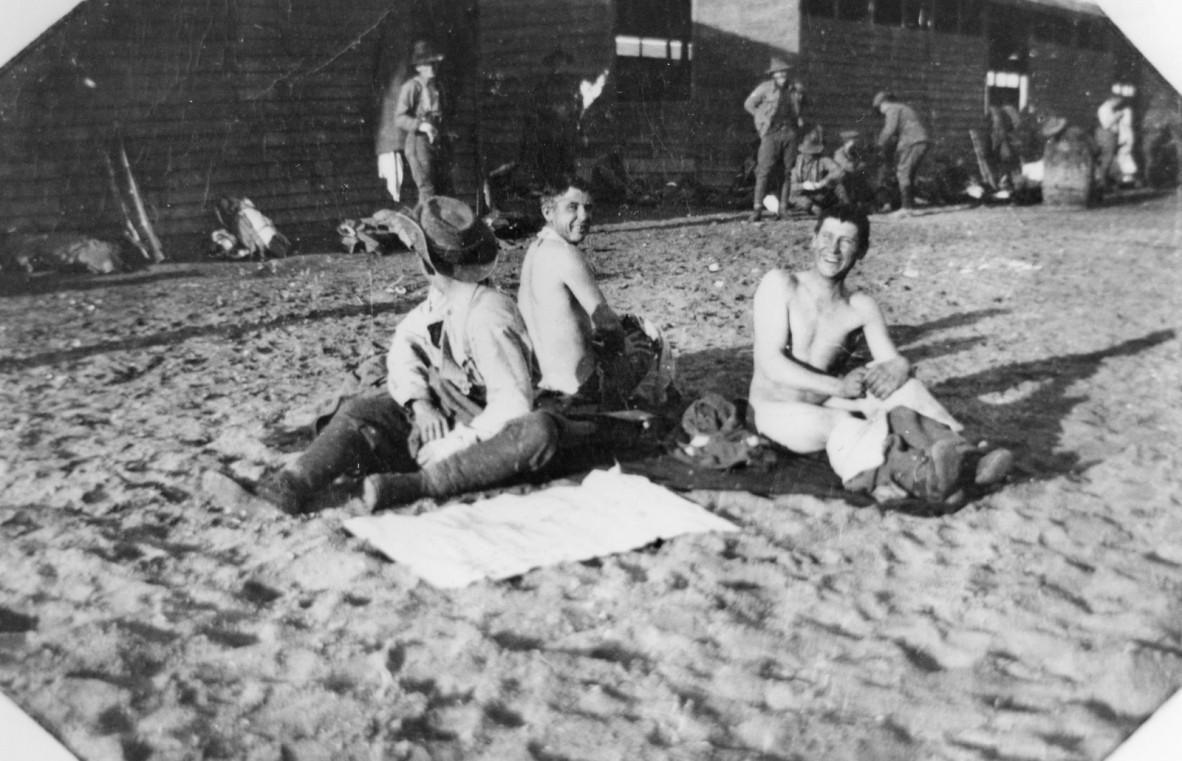
Australian soldiers delousing back at the camp, Helmia, Egypt, 1916, Digitised copy print from GS-11 Photograph Albums of Australians at Gallipoli and Egypt, State Library of Queensland.
Despite attempts by soldiers to drown lice during bathing parades, this was not always successful. Lice became a daily nuisance for soldiers, with the bugs thriving in the cramped and crowded conditions of the trenches. Not only was the relentless itchiness enough to drive you mad, but lice also caused trench fever and typhus. Consequently, it is not uncommon to find images of soldiers partially naked and picking lice from their clothes. This popular method of extermination was known as “chatting” and involved crushing the louse between your fingernails or burning them out with a cigarette end or candle. The image above is a fantastic example of this practice, with three Australian soldiers chatting at a camp in Helmia, Egypt 1916.
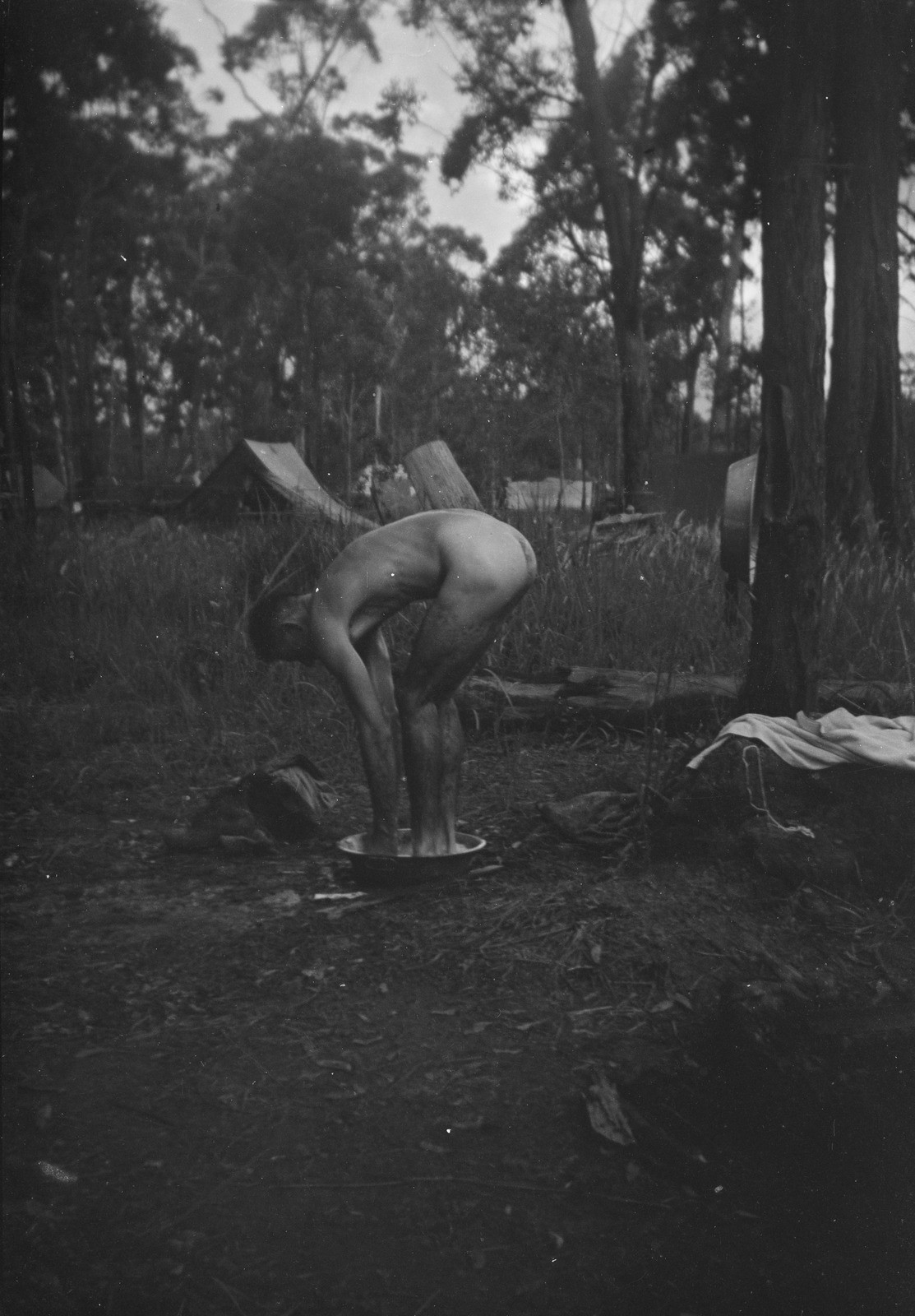
Soldier bathing in a small basin outside camp near Kilcoy, 32106 Photographs of a World War Two soldier's camp in the Kilcoy district, State Library of Queensland.
Bathing facilities at military camps, even those in Australian during WWII, were often very basic. Combined with water rationing, sometimes there was only a bucket of water available to wash yourself in. Most service personnel seem to have made the best of what was available, reflecting the mentality of “you get what you get, and you don’t get upset”. The image below shows a group of smiling women from the Australian Women’s Army Service bathing in small tubs at the 3rd Advanced Ordnance Depot, Wallangarra in 1942. You can only imagine how difficult it would have been trying to wash while also maintaining your modesty when all you had was a small bucket of water.

Women from the Australian Women's Army Service bathing in tubs at the 3rd Advanced Ordnance Depot, Wallangarra, 1942, 9976 Howard Family Clippings and CD, State Library of Queensland.
It was also not uncommon for soldiers to strip down due to the unbearable heat, especially those stationed in the Pacific during WWII. Examples of this can be found in the John Thomas Castles Collection, which contains 460 original photographs, mostly identified with captions, recording the entire wartime service of 2nd Lieutenant John Thomas Castles of H. Battery, 2nd Battalion, 94th CA (AA), United States Army. The collection includes over 100 images of Castles’s time stationed at Horn Island in the Torres Strait. Uniforms appear to be optional in many of these images, (see below), with several servicemen in various stages of undress. Rather, they seem to be enjoying the sea breeze and are unfazed by being snapped in the nude. You can also see some very impressive tan lines, which are a timely reminder to always 'slip, slop and slap' to protect yourself from our fierce Pacific sun!
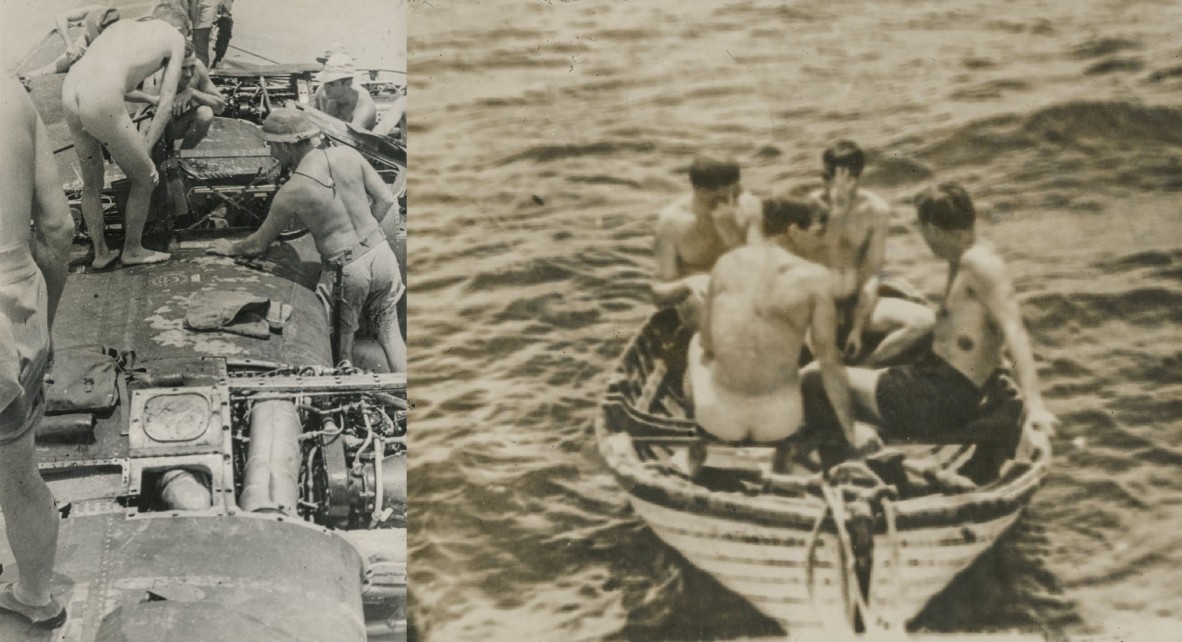
John Thomas Castles World War Two Photograph Album 1941-1946, John Oxley Library, State Library of Queensland.
The image below was taken at Hagita Creek, Milne Bay, in 1943 and shows an Australian soldier stripped down to wash a military vehicle. This image perfectly reflects the saying “work smarter, not harder”. Instead of getting his uniform wet and potentially muddy, this serviceman has opted to simply go nude.
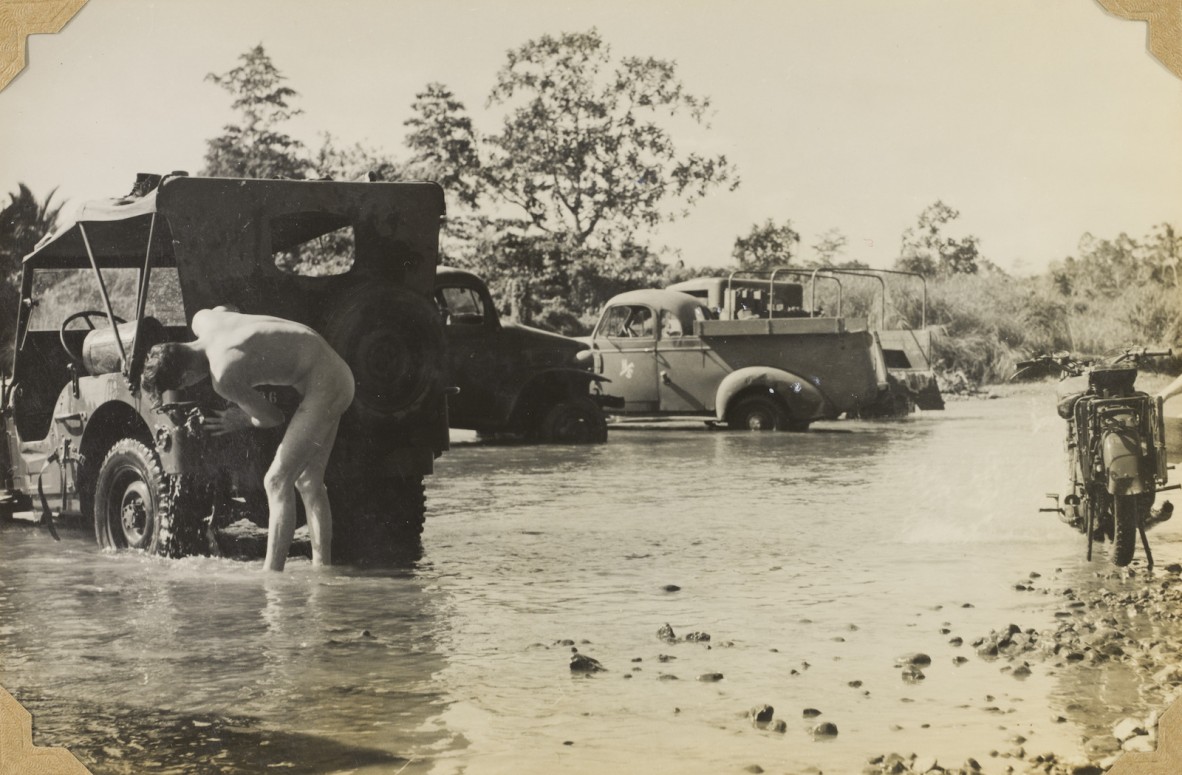
Washing vehicles in Hagita Creek, Milne Bay, Papua New Guinea, 1943 (0001-0007), 31553 John Stanton Davis Mellick Archive, John Oxley Library, State Library of Queensland.
For many soldiers on recreational leave, swimming was a perfect way to let off some steam and relax. The photo below takes the prize for the most bare bottoms that we have found in a single wartime photo (so far!). These soldiers are letting it all hang out, while enjoying a swim on what was surely a hot day somewhere in Darwin.
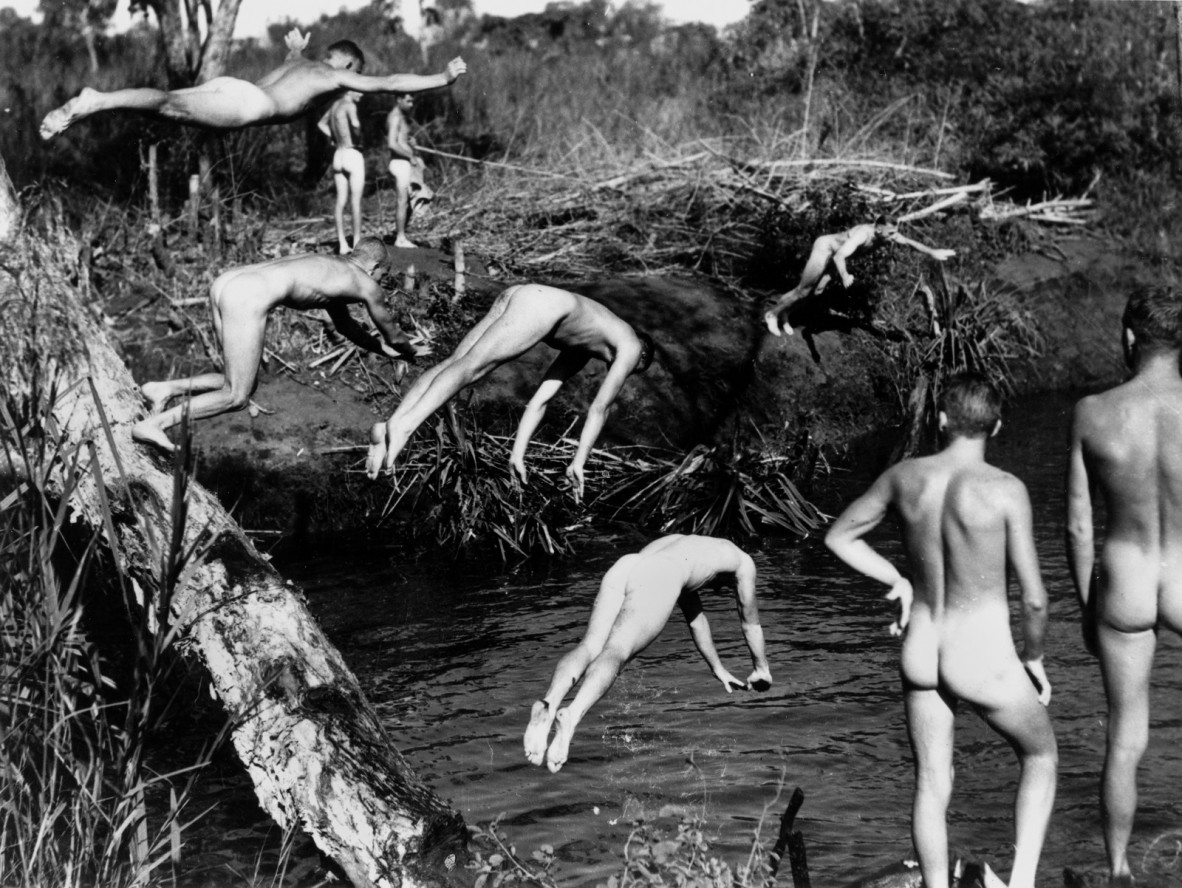
Naked servicemen swimming somewhere in the Darwin area during World War II, 1943, State Library of Queensland.
As you can see, nudity within military collections is surprisingly common. If we look beyond the bare bottoms, these images also highlight some of the challenges experienced by our soldiers, such as infestations of lice and just how difficult it could be to maintain basic personal hygiene. We hope these images have also shown the diversity of appearances in the human body. The human body is amazing, with the capability of getting us through remarkably difficult times, including conflict. On this note, as hard as it can be, we should try and love our bodies for what they are; diverse, strong, resilient and beautiful.
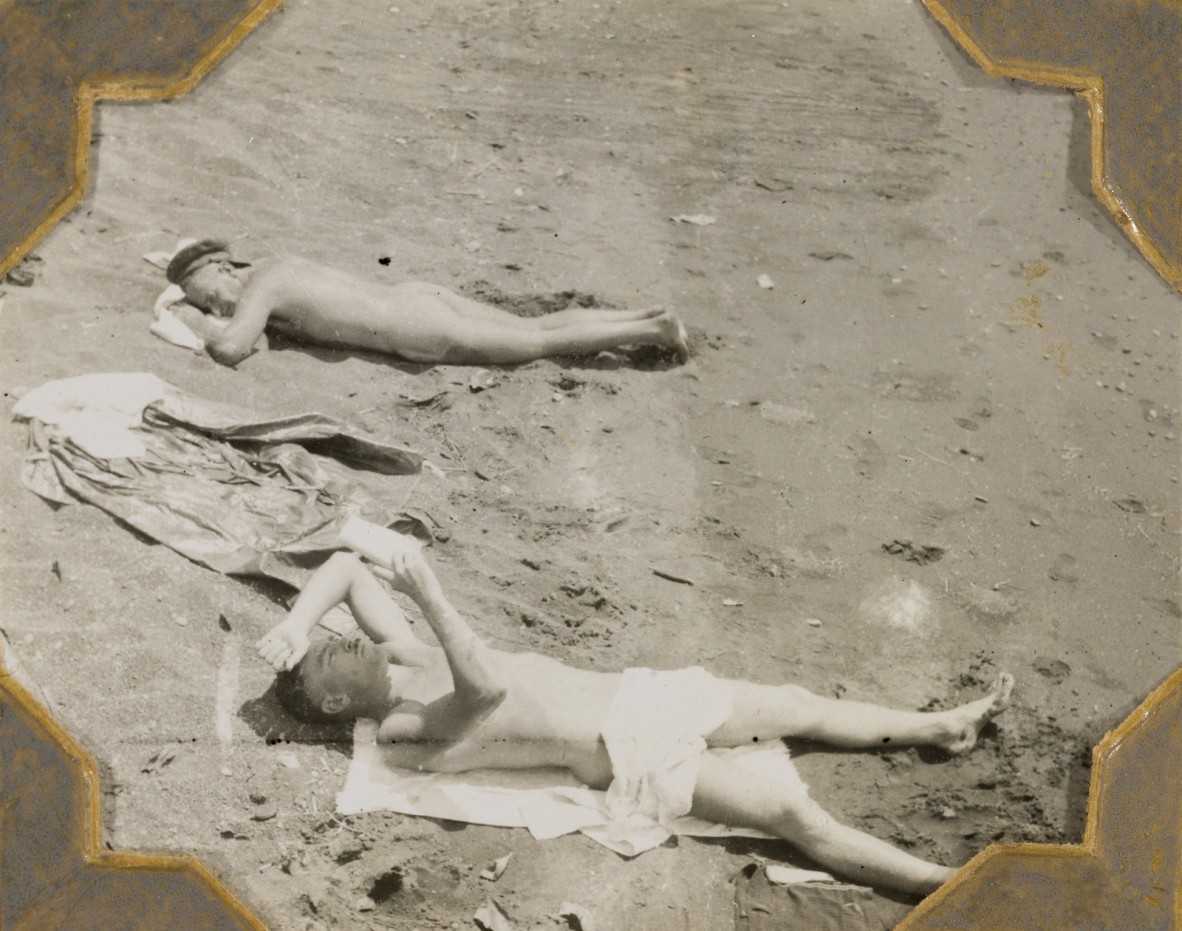
Maurie Harland and Colin Reid lying on Malahang beach, Papua New Guinea, 31553, John Stanton Davis Mellick Archive, State Library of Queensland.
You can discover more amazing wartime images at Anzac Square Memorial Galleries. Plan your visit here: https://www.anzacsquare.qld.gov.au/
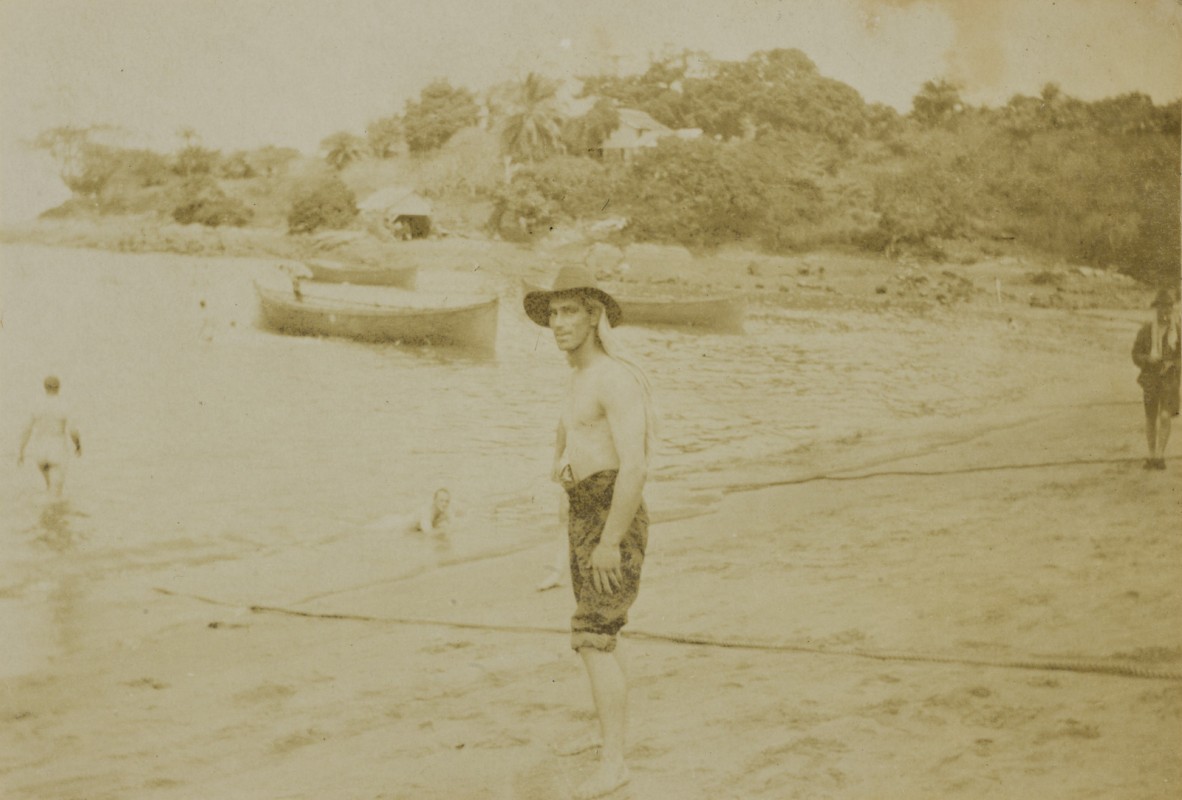
Bathing on arrival at Freetown, Sierra Leone, 13 December 1916, 30839 George Henry Brigham papers, John Oxley Library, State Library of Queensland.
Comments
Your email address will not be published.
We welcome relevant, respectful comments.